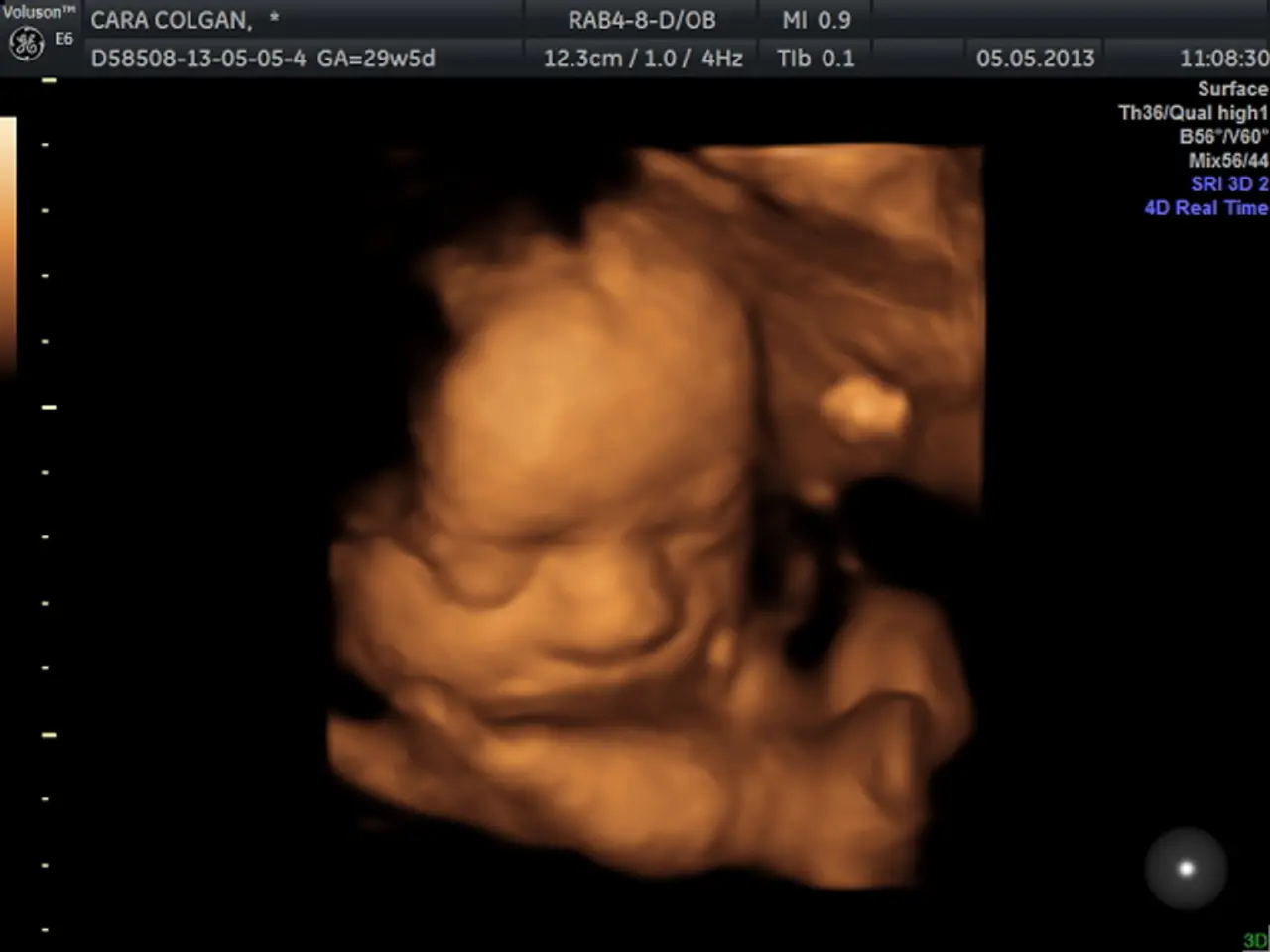Cyclopia Explanation: Origin, Identification, and Average Lifespan
In the realm of medical mysteries, one condition stands out for its rarity and severity: cyclopia. This congenital disorder, characterized by the presence of a single midline eye or closely set eyes, is a hallmark of a more extensive brain malformation known as alobar holoprosencephaly (HPE).
Alobar HPE is a severe form of HPE, where the forebrain fails to divide into two hemispheres during early embryonic development. This failure leads to a host of neurological and physical abnormalities, including cyclopia, proboscis (a tubular nasal structure), cleft lip/palate, and sometimes additional systemic anomalies like cardiac defects and polydactyly.
The exact causes of cyclopia remain elusive, but certain factors may increase the risk. Genetic mutations, such as those affecting key developmental pathways, have been implicated. For instance, mutations in the PLCH1 gene are associated with the spectrum of HPE abnormalities. Chromosomal abnormalities, like deletions involving chromosome 18p, are also known genetic causes influencing brain and facial development. Environmental factors and infections, notably toxoplasmosis, have been linked to HPE development.
The symptoms and clinical features of alobar HPE are as striking as they are severe. Neurological features include failure of forebrain division, resulting in brain malformations such as absence or fusion of cerebral hemispheres, hydrocephalus, agenesis of corpus callosum, and sometimes seizures. Facial deformities are the hallmark, with cyclopia, absence of a nose or proboscis above the eye(s), microcephaly, cleft lip and palate, and other midline defects. Other anomalies may include cardiac defects, renal dysplasia, polydactyly, and omphalocele in some cases.
The prognosis of alobar HPE, particularly with cyclopia, is extremely poor. It is generally lethal, with most affected fetuses resulting in stillbirth or death shortly after birth. Survivors, very rare in this condition, show profound neurological impairment and multiple organ malformations, incompatible with normal life.
Early prenatal diagnosis via ultrasound and genetic testing is crucial for family counseling and pregnancy management. There is no treatment, and management is supportive or aimed at pregnancy decision-making due to the uniformly poor outcome.
Cyclopia and other forms of holoprosencephaly can be diagnosed using ultrasound imaging during the first trimester of pregnancy, with brain malformations and other structural abnormalities appearing on ultrasounds. Holoprosencephaly refers to a group of rare disorders, with four types: alobar, semi-lobar, lobar, and middle interhemispheric variant (MIHV). MRI scans may also be used to identify cyclopia.
In people with cyclopia, there is no separation between the right and left hemispheres of the brain. Cyclopia is a condition where the front portion of the brain does not properly split into two halves, known as the right and left hemispheres. Other potential risk factors for cyclopia include gestational diabetes, infections during pregnancy, exposure to UV light, using alcohol and certain medications during pregnancy.
Signs of cyclopia can include a single eye or a partially divided eye in a single socket, absence of a nose, microcephaly, cleft lip or palate, tooth abnormalities, hormonal abnormalities, hypoglycemia, low levels of sodium in the blood, genital abnormalities, and other physical deformities.
Holoprosencephaly can occur in Smith-Lemli-Opitz syndrome, a rare genetic condition affecting multiple organs and bodily systems. Cyclopia is the most severe form of holoprosencephaly, with approximately 5-10% of infants born with cyclopia surviving to birth, with most surviving infants only living for a few hours. Cyclopia is also known as alobar holoprosencephaly.
There is no standard treatment for cyclopia or the other forms of holoprosencephaly, with treatment focusing on addressing symptoms and providing life support. The National Organization for Rare Disorders (NORD) states that one-third of infants born with holoprosencephaly have chromosomal abnormalities, with trisomy 13 being the most common. Research suggests that genetic factors contribute to cyclopia, and parents who carry the genetic trait may have a higher risk of having a child with cyclopia. However, the condition is so rare that even parents with the hereditary trait rarely give birth to a child with cyclopia.
- Cyclopia is a hallmark of a more extensive brain malformation known as alobar holoprosencephaly (HPE), which is a severe form of HPE characterized by the failure of the forebrain to divide into two hemispheres during embryonic development.
- Genetic mutations, such as those affecting key developmental pathways and chromosomal abnormalities, have been implicated as potential causes of cyclopia and other holoprosencephaly disorders.
- Cases of cyclopia are often associated with other neurological disorders, physical abnormalities, and health-and-wellness issues, including cardiac defects, renal dysplasia, polydactyly, and omphalocele.
- In terms of parenthood and women's health, early prenatal diagnosis via ultrasound and genetic testing is crucial for family counseling and pregnancy management due to the uniformly poor outcome of cyclopia and other severe forms of holoprosencephaly.
- Monitoring for symptoms such as a single eye or partially divided eye, absence of a nose, microcephaly, cleft lip or palate, hormonal abnormalities, low levels of sodium in the blood, genital abnormalities, and other physical deformities is essential in diagnostic processes, often through ultrasound imaging and MRI scans.
- In the realm of medical-conditions and neurology, cyclopia, as a severe form of holoprosencephaly, lies at the intersection of genetics, science, and neurological disorders, posing as one of the mysteries in the health-and-wellness domain that challenges our understanding of pregnancy and neurological-disorders.




